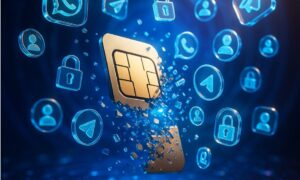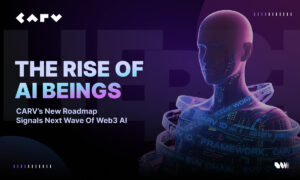In our ever-evolving digital landscape, the importance of robust identity verification processes has never been more pronounced. Businesses, financial institutions, and government agencies lean heavily on these processes to safeguard their operations against fraud and to fortify security. In this narrative, we’ll embark on a journey through the intricate process of identity verification, a process that is as much about ID verification software as it is about human identity, culminating in the invaluable realm of biometric verification.
At its heart, identity verification is the bridge between the persona one claims to be and the one they truly are. It’s a complex interplay of documents, biometrics, and personal data, all united under a single mission: to affirm that an individual’s identity aligns with their stated claims. This multifaceted process can be neatly divided into two primary categories, namely identity document verification and biometric verification.
Identity Document Verification
Identity document verification forms the bedrock of the identity verification journey. It’s the initial step, a process of immense importance in constructing the foundation of an individual’s digital identity. Here, we delve into the meticulous examination of official documents like driver’s licenses, passports, and identification cards. The primary objective is clear: we aim to confirm not just the legitimacy of these documents, but also that the information provided by the individual concurs harmoniously with the details inscribed in these documents.
As we scrutinize these documents, it’s not merely about the physicality of the cards or papers; it’s about the essence of identity, encapsulated in these artifacts. By validating these documents, we seek to create a digital mirror of an individual’s tangible identity.
1) Document Capture
The process of identity document verification commences with the crucial step of document capture. To capture the identity document, various methods are employed, each offering its own level of convenience and accessibility. This can range from the traditional approach of scanning physical documents with dedicated equipment to the more contemporary use of mobile devices or webcams for snapping photos of the document. The essence of this step lies in acquiring high-quality images, which are indispensable for the subsequent stages of accurate verification.
2) Document Assessment
Once the document is successfully captured, it undergoes an in-depth assessment. During this phase, the focus shifts to checking for the presence of security features and examining the document’s overall authenticity. The security features encompass elements that are specifically designed to deter counterfeiting and tampering. These may include holograms, watermarks, security threads, and other specialized markings unique to different types of identity documents. Verifying these features is crucial for ensuring that the document has not been compromised or forged in any way.
3) Information Extraction
The extracted data is like the heart and soul of this verification process. It typically includes the individual’s full name, date of birth, document number, and, in some cases, even their photograph. These details hold the key to confirming an individual’s identity. The full name provides a human touch, the date of birth adds a sense of chronology, the document number is a unique marker, and the photograph is the face that connects the dots.
This extracted information is not merely data points; it’s the foundation upon which the verification process is built. It serves as the basis for cross-referencing against external databases and the information provided by the individual themselves. By scrutinizing the document’s authenticity, capturing high-quality images, and extracting essential data, this process not only enhances security but also paves the way for subsequent stages of identity verification, such as biometric verification.
4) Document Verification
Following the extraction of information from the identity document, the process moves to a pivotal stage known as document verification. This phase is designed to cross-reference and validate the extracted data against a vast repository of known valid documents. To accomplish this critical task, specialized ID verification software and robust algorithms come into play, fortifying the identity verification process and enhancing its ability to identify counterfeit or forged documents.
Once the information is extracted, it is compared to databases of known valid documents. Specialized ID verification software can assist in this process, helping identify counterfeit or forged documents. There’re more resources for identity proofing and verification trends since the beginning of the digitalization era. These databases serve as a comprehensive repository of legitimate documents and their corresponding details. Through the use of specialized software, which can efficiently process and cross-reference this information, the system can identify any discrepancies or irregularities in the data, raising red flags if the document does not align with the expected standards of authenticity.
Biometric Verification
Biometric verification stands as a pillar of modern identity verification, offering a sophisticated and highly secure approach to confirming an individual’s identity. It leverages unique physical or behavioral characteristics, ensuring that identity confirmation goes beyond traditional document verification. The key components of biometric verification include selfie uploading, face matching, and face verification.
1) Leveraging Unique Characteristics
Biometric verification operates on the principle that every individual possesses distinct and unchangeable physical and behavioral attributes. These unique traits, such as fingerprints, facial features, or even voice patterns, form the foundation for biometric verification. They provide a powerful means of verifying identity that is not easily compromised.
2) Selfie Uploading
To initiate the biometric verification process, individuals are often required to upload a recent selfie. This seemingly simple act has profound implications for identity verification. The selfie serves as a point of reference, and by utilizing advanced algorithms and facial recognition technology, it becomes a crucial piece in the identity verification puzzle.
3) Face Matching
The core of biometric verification lies in the intricate process of face matching. Advanced algorithms scrutinize the facial features presented in the uploaded selfie and compare them to the photograph on the identity document. This detailed analysis involves assessing the unique characteristics of the face, such as the arrangement of facial landmarks, the distance between key points, and even the play of light and shadow on the individual’s visage. By carefully evaluating these factors, the system can determine whether the two images correspond, providing a further layer of confirmation.
Face matching is not only about confirming that the two images look alike, but it also involves sophisticated analysis of the presented facial data. This ensures that the system can distinguish between a genuine, live image and an attempt to use a static or manipulated photograph for verification.
4) Face Verification
The final step in the biometric verification process is face verification. Here, the system not only confirms the resemblance between the selfie and the identity document photo but also ensures that the person in the selfie is physically present. To achieve this, the system may prompt the individual to perform specific actions, such as blinking, nodding, or turning their head. These actions are used to prove that the individual is interacting with the system in real-time, eliminating the possibility of using a static image or video recording.
Conclusion
The identity verification process is a critical component of ensuring security and preventing fraud in various industries. Identity document verification and biometric verification work in tandem to confirm an individual’s identity, providing a comprehensive approach to security. With the help of advanced ID verification software organizations can enhance their verification processes and minimize the risk of identity fraud.
In a rapidly evolving digital landscape, the integration of document and biometric verification not only enhances security but also helps individuals and organizations maintain trust and confidence in their transactions and interactions. As the digital age progresses, it’s crucial to stay updated on the latest trends in identity proofing and verification to ensure that identity verification processes remain robust and effective.



































